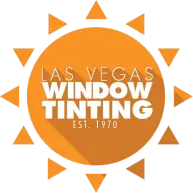
Window tints have become an essential part of modern vehicle and building maintenance, offering benefits like heat reduction, UV protection, and enhanced privacy. However, with various types of tints available, choosing the right one can be overwhelming.
What is ceramic tint?
Ceramic tint is a type of window film made from ceramic particles that are non-metallic and non-conductive. These particles are infused into the film to provide superior heat and UV rejection without affecting the clarity of the window.
How Does Ceramic Tint Work?
Ceramic tint works by blocking out infrared light, which is the primary cause of heat inside vehicles and buildings. The ceramic particles reflect and absorb these rays, significantly reducing the amount of heat that passes through the window.
Benefits of Ceramic Tint
Superior Heat Rejection: One of the standout features of ceramic tint is its excellent heat rejection capabilities. It can block up to 50% of solar heat, keeping the interior of your vehicle or building cooler.
Excellent UV Protection: Ceramic tint provides up to 99% UV protection, safeguarding you from harmful ultraviolet rays that can cause skin cancer and other health issues. It also prevents the interior of your car or home from fading due to sun exposure.
Non-Metal Construction: Unlike metallic tints, ceramic tints do not interfere with electronic signals. This is crucial for modern vehicles equipped with GPS, mobile phones, and other electronic devices.
Maintains Good Clarity: Ceramic tint offers excellent visibility both during the day and at night. It maintains a clear view without the hazy or reflective properties found in some other tints.
Drawbacks of Ceramic Tint
Higher Cost Compared to Dyed Film
While ceramic tint offers numerous benefits, it is generally more expensive than dyed film. This higher cost can be a consideration for budget-conscious consumers.
Exploring 3M Window Tint
About 3M
3M is a well-known manufacturer that offers a wide range of window tints. They are renowned for their innovative products and high-quality materials, making them a popular choice among consumers.
Types of 3M Window Tints
3M provides various types of window tints, each with unique features and benefits.
Dyed Films
Dyed films are the most basic type of window tint offered by 3M. They provide good visibility and a sleek look but are less effective at heat rejection compared to ceramic tints.
Ceramic Films
3M’s ceramic films incorporate ceramic particles similar to generic ceramic tints, offering enhanced heat rejection and UV protection without electronic interference.
Hybrid Films
Hybrid films combine dyed and metallic layers to provide a balance between cost, performance, and appearance. They offer better heat rejection than dyed films but can interfere with electronic signals.
3M Ceramic IR Series
Features and Benefits
The 3M Ceramic IR Series is designed to provide excellent heat rejection and UV protection. It uses nano-ceramic technology to achieve these benefits, ensuring no interference with electronic devices
3M Crystalline Series
Features and Benefits
The 3M Crystalline Series is a high-end window film that uses multi-layer optical film technology to reject more heat than many darker films without changing the appearance of your vehicle or building. It offers the highest level of heat rejection and clarity among 3M’s window tints.
Comparing Ceramic Tint and 3M Window Tint
Heat Rejection
Ceramic Tint: Ceramic tint is renowned for its ability to reject a significant amount of heat, making it an excellent choice for hot climates.
3M Ceramic IR: The 3M Ceramic IR series offers superior heat rejection, potentially outperforming generic ceramic tints.
3M Crystalline: The 3M Crystalline series provides the highest heat rejection thanks to its advanced multi-layer technology while maintaining a lighter tint.
Clarity
Ceramic Tint: Ceramic tints maintain good clarity, making them ideal for those who want effective heat rejection without compromising visibility.
3M Ceramic IR: The 3M Ceramic IR series may have a slight blue hue but still offers excellent clarity and performance.
3M Crystalline: The Crystalline series excels in clarity, offering a virtually clear appearance while still providing top-tier heat rejection.
Cost
Ceramic Tint: Ceramic tints are generally more expensive than dyed films but less costly than high-end options like the 3M Crystalline series.
3M Ceramic IR: The cost of the 3M Ceramic IR series varies by installer but is typically higher than generic ceramic tints.
3M Crystalline: As the premium option, the 3M Crystalline series is the most expensive among the three, reflecting its superior performance and advanced technology.
Conclusion
Deciding between ceramic tint and 3M window tint depends on your specific needs and priorities. Ceramic tint offers excellent heat rejection and UV protection without interfering with electronic signals, making it a strong choice for many. However, if you’re looking for the highest level of performance and are willing to invest more, the 3M Crystalline series stands out with its superior heat rejection and clarity.
Additional Considerations
When choosing a window tint, consider local regulations and laws regarding tint darkness and reflectivity. Additionally, the warranty offered by both the manufacturer and installer can provide peace of mind. Ensure you select a reputable installer to guarantee the best results and longevity of your window tint.
